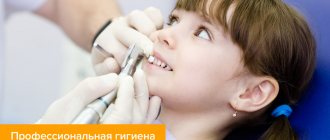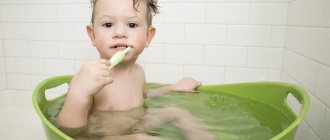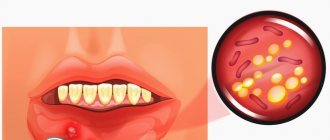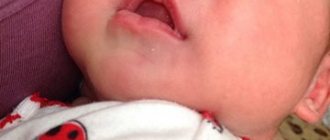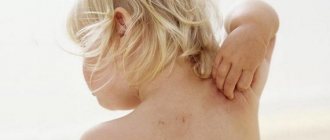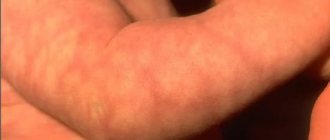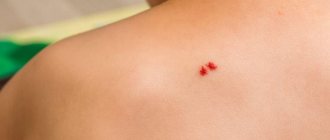Acne in children is one of the most common skin diseases, especially in adolescence. We are talking about a violation of the hair follicles and sebaceous glands, which become clogged, leading to the formation of pimples and cysts.
Acne or Acne vulgaris by its medical name is defined as inflammation of the sebaceous glands. Most often this occurs during puberty, as a result of hormonal activity. In addition to pain and discomfort, acne in boys and girls is fraught with social isolation, the constant need to hide damage, low self-esteem, and in some cases even the development of anxiety and depression. That's why it's so important to understand what acne is and what the most effective ways to treat it are.
What is atopic dermatitis
Atopic dermatitis is a chronic skin disease characterized by a relapsing course.
Babies with atopic dermatitis are bothered by itching and dry skin. Foci of inflammation can be located throughout the body, but they especially “love” children’s cheeks and folds, as well as the area under the diaper. Statistics indicate that atopic dermatitis occurs in every fifth baby [1]. Why is he dangerous? Lack of treatment can lead to the development of severe forms of atopic dermatitis, the spread of inflammation and the atopic march. In this condition, the disease begins to “march” through the child’s body, provoking the appearance or exacerbation of concomitant diseases. In 20-43% of cases, the development of bronchial asthma is possible, and twice as often - allergic rhinitis or eczema [2].
In addition, disruption of the hydrolipid barrier that occurs with atopic dermatitis in children can cause a secondary infection. Unfortunately, atopic dermatitis cannot be “outgrown.”
Skin rashes on babies: causes, treatment and prevention
In the first months of life, babies are prone to various types of irritation and rashes on parts of their body. This phenomenon is quite normal and in most cases is considered normal. This is due to the fact that the baby’s body is still very vulnerable, and it is just beginning to adapt to external and internal factors that can negatively affect the child’s condition. In addition, up to two or three months the baby is faced with hormonal changes, which often causes similar reactions. Consequently, a rash is not always a cause for concern and panic, but a specialist can best determine the nature of its occurrence and methods of treatment. There are a number of reasons that provoke the appearance of pimples, spots or redness on the skin of a newborn:
- hormonal rash;
- prickly heat;
- dermatitis;
- hives;
- food allergies;
- infections and viruses.
In 70% of cases, the rash occurs precisely on a hormonal background, which is completely normal and does not require treatment, especially medication. This is due to the receipt of maternal hormones while still in the womb, and subsequent adaptation to new conditions. Distributes on the forehead, temples, and on the back of the head under the hair. It goes away on its own, usually within a few days. In this case, the mother is recommended to simply bathe the baby daily in boiled water with the addition of a herbal solution (series). During the hot season, the baby’s delicate skin is doubly prone to various manifestations due to drying out in the sun. All areas exposed to sweat also become vulnerable. Miliaria is not life-threatening for the baby, but it can cause discomfort in the places where it is localized. You should bathe your child more often, ventilate the room, and, if possible, maintain optimal humidity where the baby spends most of his time. Of course, you should not dress your child in clothes that will make him hot and uncomfortable. It is useful to give the baby time to be without clothes and diapers so that the skin has the opportunity to breathe. In addition, it is recommended to always wash small items only using a special children's powder, and then iron them on both sides.
Symptoms of atopic dermatitis in children
According to recent studies [3], in 45% of babies, atopic dermatitis debuts between the ages of two and six months. In 60% of patients during the first year of life.
With atopic dermatitis in children, clinical symptoms and localization of inflammation largely depend on age. There are infant (up to one and a half years), child (from one and a half years to puberty) and adult phases. The following symptoms are common to all phases:
- Severe dryness of the skin (xerosis), which cannot be treated with regular baby cream .
- Redness and inflammation on the skin (especially symmetrical ones).
- Itching, causing severe discomfort to the child.
- Recurrent course (alternating periods of remissions and exacerbations). Moreover, in the cold season, deterioration is more often observed, and in the warm season, improvement is observed.
According to the nature of the course, acute and chronic stages of atopic dermatitis are distinguished, which are expressed by different signs (symptoms):
● Acute stage. Rough red spots (erythema), nodular rashes (papules), swelling, and crusts (including weeping) may appear on the baby's skin.
● Chronic stage. Accompanied by lichenification (thickening of the skin), cracks on the soles and palms, scratching, and increased pigmentation of the skin of the eyelids.
Skin rashes on babies: causes, treatment and prevention
In the first months of life, babies are prone to various types of irritation and rashes on parts of their body. This phenomenon is quite normal and in most cases is considered normal. This is due to the fact that the baby’s body is still very vulnerable, and it is just beginning to adapt to external and internal factors that can negatively affect the child’s condition. In addition, up to two or three months the baby is faced with hormonal changes, which often causes similar reactions. Consequently, a rash is not always a cause for concern and panic, but a specialist can best determine the nature of its occurrence and methods of treatment. There are a number of reasons that provoke the appearance of pimples, spots or redness on the skin of a newborn:
- hormonal rash;
- prickly heat;
- dermatitis;
- hives;
- food allergies;
- infections and viruses.
In 70% of cases, the rash occurs precisely on a hormonal background, which is completely normal and does not require treatment, especially medication. This is due to the receipt of maternal hormones while still in the womb, and subsequent adaptation to new conditions. Distributes on the forehead, temples, and on the back of the head under the hair. It goes away on its own, usually within a few days. In this case, the mother is recommended to simply bathe the baby daily in boiled water with the addition of a herbal solution (series). During the hot season, the baby’s delicate skin is doubly prone to various manifestations due to drying out in the sun. All areas exposed to sweat also become vulnerable. Miliaria is not life-threatening for the baby, but it can cause discomfort in the places where it is localized. You should bathe your child more often, ventilate the room, and, if possible, maintain optimal humidity where the baby spends most of his time. Of course, you should not dress your child in clothes that will make him hot and uncomfortable. It is useful to give the baby time to be without clothes and diapers so that the skin has the opportunity to breathe. In addition, it is recommended to always wash small items only using a special children's powder, and then iron them on both sides.
Causes of atopic dermatitis in children
Atopic dermatitis can be considered a hereditary disease, because the most important role in its occurrence is played by a genetic factor [3]:
- In 80% of children, it occurs if both parents have or have had atopic dermatitis.
- In more than 50% of children - if at least one of the parents was sick, especially the mother (this doubles the risk of transmitting the disease “by inheritance”).
Some prenatal factors can also provoke atopic dermatitis in a baby: for example, poor nutrition of the expectant mother, contact with toxic substances, infections suffered during pregnancy, as well as bad habits and stress.
In addition, atopic dermatitis more often develops in babies who suffered oxygen deprivation during childbirth, were born prematurely and were bottle-fed (perinatal factors).
Types of moles
The most harmless moles are pigmented ones, they are called lentigo.
They look almost like freckles and are very easy to confuse. Such moles are formed due to the accumulation of melanocytes under the skin, cells responsible for pigmentation. All other types of birthmarks can cause trouble for their owner. These are epidermal-dermal nevi - moles that can rise above the surface of the skin, usually located on the palms, feet or in the groin area. Intradermal nevi are convex, often covered with hair. Dysplastic nevi are irregularly shaped tubercles with unclear boundaries; they can be more than a centimeter in size.
One of the most dangerous is a giant nevus. This is a congenital spot that can cover large areas of the skin. It is usually removed early, since it looks scary, and the risk that it will degenerate into a malignant formation is quite high.
Diagnosis of atopic dermatitis in children
For a long time it was believed that atopic dermatitis in children is predominantly an allergic disease. However, it has now been proven that this is, first of all, a disease with dysfunction of the epidermis! And food allergies are detected only in 30-40% of children with atopic dermatitis.
The symptoms of atopic dermatitis are almost always influenced by certain environmental triggers. This could be chlorinated or “hard” water, soap, contact with an allergen, unfavorable climate and even stress. Another common trigger is bacteria that enter the skin through a damaged epidermal barrier.
Only a doctor (pediatrician, dermatologist, allergist) can make a diagnosis of “atopic dermatitis in children”! It takes into account the presence of external signs of disease and itching, as well as hereditary factors. Laboratory tests may be prescribed for children to carry out diagnostics. For example:
- General detailed (clinical) blood test.
- Biochemical general therapeutic blood test.
- General (clinical) urine analysis.
- Study of the level of total immunoglobulin E in the blood.
- Skin testing with allergens.
- Skin biopsy.
Big ones - under the knife!
Melanoma can make itself felt by changing the color of the nail to brown or black, and the appearance of spots on the palms and soles.
To monitor atypical nevi, the patient usually undergoes dermatoscopy every 3–12 months. A biopsy is taken from suspicious lesions and histological examination is performed to establish a diagnosis. All congenital moles larger than 2 cm should be under constant medical supervision; in any case, they will have to be removed. If necessary, the baby will have a skin passport to monitor the number, dynamics of growth and identify any changes in moles. The operation is usually performed shortly before the onset of puberty. Especially often, cells degenerate on a giant congenital nevus (more than 15 cm in diameter) in adolescence.
Published on the portal parents.ru
Treatment of atopic dermatitis in children
In modern medicine, there are three degrees of severity of atopic dermatitis in children:
- Easy. The child responds well to treatment, remission can last more than 10 months, the itching is minor, the redness is slight. Exacerbations occur no more than twice a year.
- Medium-heavy. Exacerbations occur 3-4 times a year, and periods of remission are reduced to 2-3 months. The therapy gives less pronounced results, the redness “stubbornly” returns.
- Heavy. Long-term exacerbations are interrupted by short periods of remission - up to one and a half months. Treatment helps little or for a short period of time; the baby’s behavior is greatly affected by itching [4].
At all stages of atopic dermatitis, pediatricians and dermatologists recommend emollients - cosmetic skin care products. They moisturize the skin and help restore the level of lipids - the most important structural components. During periods of exacerbation, emollients can be applied frequently and generously.
Pay attention to the composition; it is advisable that emollients are not addictive. Their main tasks are to help the skin produce its own lipids, providing effective hydration and softening. In addition, the constant use of emollients prolongs periods of remission and alleviates the symptoms of atopic dermatitis.
The Mustela Stelatopia line of cosmetics will help restore skin comfort for a long time! Stelatopia emollients are effective at all stages of atopic dermatitis , incl. at its first signs - increased dryness of the skin.
Studies have confirmed that the use of Stelatopia emollient cream can reduce the likelihood of developing atopic dermatitis by 51% ! [6]
Treatment (use of hormonal drugs) for atopic dermatitis in children can only be prescribed by a doctor, taking into account age, symptoms, concomitant diseases and test results. Self-medication can be dangerous!
- For external therapy for moderate and severe degrees of atopic dermatitis, topical glucocorticosteroids, topical calcineurin inhibitors and others are used.
- In case of mild disease, the use of Stelatopia Emollient Cream reduces the severity of inflammation after 32 hours, due to the presence of sunflower oil in the distillate [5].
- In systemic therapy, the drugs dupilumab, cyclosporine, glucocorticosteroids and others are used orally or in injection forms.
- To relieve itching - clemastine, hifenadine, cetirizine, chloropyramine, levocetirizine and others. The use of Stelatopia emollient cream as a cosmetic skin care product reduces the severity of itching in 80% of cases [7].
- Physiotherapy treatment may include phototherapy. Sometimes, in the treatment of atopic dermatitis, diet therapy, acupuncture, plasmapheresis and some other methods may be prescribed.
Which moles are not dangerous, but require mandatory consultation with a doctor?
A blue nevus
is a spot, nodule or node of dark blue, black or gray color up to 1 cm in size. The color is due to the large number of cells with melanin in the dermis. Such moles have a dense consistency and are most often located in the scalp area, on the dorsum of the hands and feet. Blue nevi usually appear in early childhood, more often in girls, and grow slowly.
Spitz nevus
- This is a reddish-pink or yellowish nodule, most often located on the face and limbs in pre-teen children, and quickly increases in size. It may be a sign of poor nutrition and gastrointestinal problems. Removal is usually required.
Galonevus
makes itself felt in people with reduced immunity and severe autoimmune diseases. A white rim appears at the site of the mole. Occurs more often in childhood and adolescence.
Spotted nevus
is a light brown café au lait spot ranging in size from 1 to 15 cm or more. Against its background there are small dark brown spots or nodules of 2-3 mm. Lesions usually develop before the onset of puberty. The reason is a failure in the structure of pigment cells containing melanin.
Mongolian spot
- a pigment disorder of a grayish-blue color, usually located in the lumbar region, sacrum, buttocks, less often - on the head under the hair. In Mongolian newborns it occurs in 90% of cases, in representatives of other nationalities - no more than 0.5%. As a rule, it disappears in early childhood.
Nevus Ota
- a gray or blue spot around the eye caused by genetic neurological factors. May be subtle or bright. Mainly found among Asian peoples.
Flaming (wine) nevus
looks like an irregularly shaped red or purple spot. Arises from birth, formed from dilated capillaries. As the child grows, it enlarges and becomes lumpy and never resolves on its own. The exception is nevus of Unna. A red spot (sometimes called a “stork bite” or “angel’s kiss”) is located on the back of the neck, sometimes on the eyelids and bridge of the nose. Approximately a third of newborns have it and disappear by 3-5 years.
Anemic nevus
- white spots with irregular edges on the chest or back. The reasons are a violation of the development of blood vessels in a certain area of the skin. It is practically not noticeable in infants, but is more pronounced at school age.
The interpretation of moles - moleosophy - was one of the ways to predict fate in ancient times. So, for example, owners of moles on their faces were considered exalted persons. A mole on the right side of the chest for representatives of the stronger half is a sign of an easy character, on the left - a sign of love; on the woman’s right breast - a sign of material well-being, on the left - to her first-born boy.
The main danger of moles is that some types can degenerate into melanoma, a malignant neoplasm with an aggressive course. It occurs in both young people and children, and the frequency of detection is increasing year by year. Over more than half a century, the prevalence of the pathology has quadrupled. Among all malignant tumors, melanoma accounts for less than 10%, but causes 80% of deaths from cancer.
Prevention of atopic dermatitis in children
For atopic dermatitis, primary, secondary and tertiary preventive measures are distinguished.
Primary prevention
is aimed at preventing the occurrence of atopic dermatitis in children.
Recommended:
- Expectant mothers with a tendency to allergic reactions should exclude allergenic foods from their diet.
- Introducing complementary foods to babies begins at four months of age.
- Pregnant women and newborns at risk should take probiotics containing lactobacilli.
- Practice breastfeeding whenever possible.
- Eliminate exposure of your baby to tobacco smoke.
- Maintain humidity levels and regularly ventilate the children's room.
Secondary prevention
is aimed at eliminating risk factors that, under certain conditions (stress, weakened immunity, etc.) can lead to the occurrence, exacerbation and relapse of atopic dermatitis.
Recommended:
- Regular consultations with specialists.
- Maintaining awareness of new research and drugs in the treatment of atopic dermatitis.
